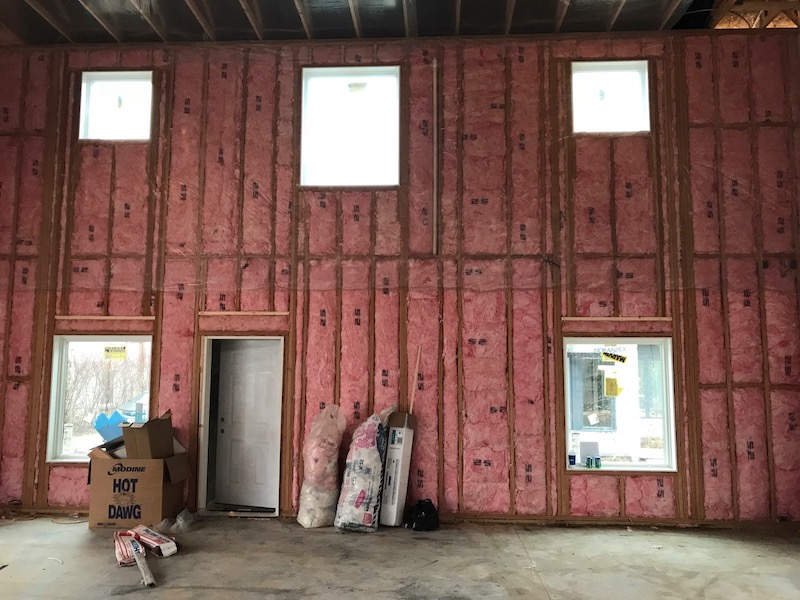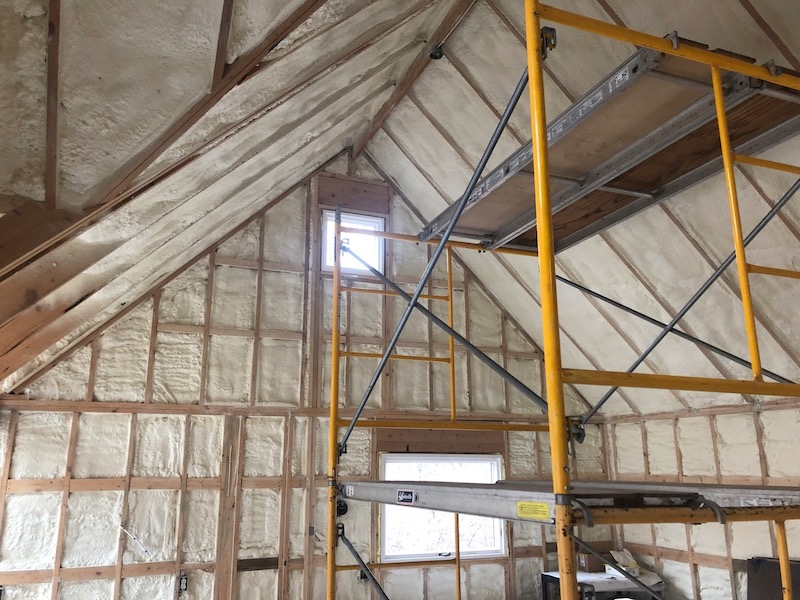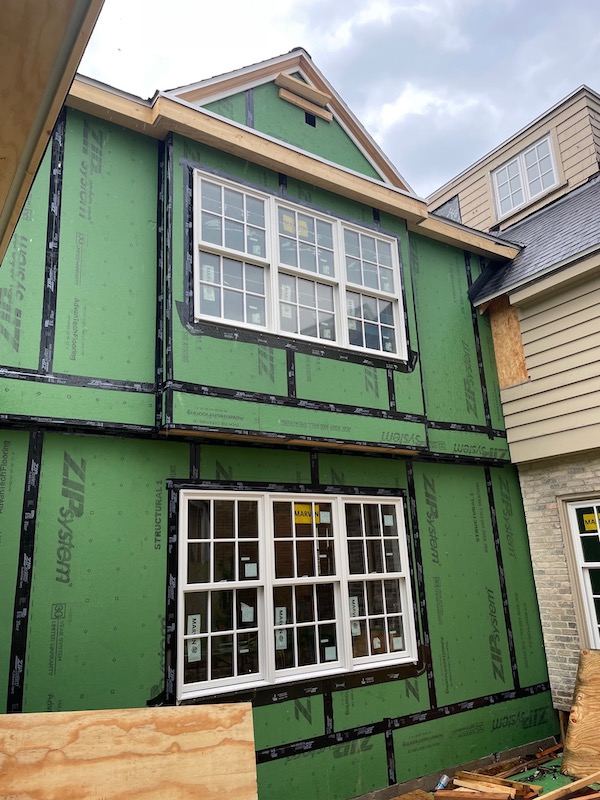A home loses as much as 40 percent of its energy due to air infiltration, so having the right insulation in your home is key. Insulation helps retain heat inside of your home, whilst simultaneously working to prevent air from leaking in. There are many different materials we use when insulating a home remodeling project, however not all have the same level of efficiency.
R-Value
R-value is the number assigned to an insulating material based on its ability to resist heat flow. The type of insulation, its thickness and its density all determine the material’s R-value. The higher the R-value your insulation has, the more energy efficient your home will be.
Fiberglass Insulation
Fiberglass insulation is the most common type of insulation we use in a new construction home or remodeling project. Manufacturers make fiberglass insulation out of silica sand and heat it to produce glass, and spin it into fibers.

When properly installed, fiberglass insulation does not allow air to penetrate through it. This makes fiberglass insulation a viable option when looking to make your home more energy efficient on a budget. Clients should understand that fiberglass insulation settles over time, so it can lose some of its insulating efficiency as it ages.
- R-value per inch: 3.1 – 4.3
Spray Foam Insulation
Manufacturers make spray foam insulation from organic chemical compounds derived from petroleum extracts. It seeps and expands to fill every crack and crevice in the wall. Spray foam insulation actively resists heat loss and all but eliminates air infiltration into your home.
Spray foam insulation helps to reduce thermal bridging. This is because it is able to cover a large surface area within the walls of a home. This is the most commonly used insulation to maximize a home’s energy efficiency.

There are two types of spray foam insulation: open cell and closed cell. Open cell foam contains cells within the foam that are deliberately left open to make the material more flexible. Closed cell, as the name suggests, contains cells that are completely closed. This results in a more rigid material, and a higher R-value than its open cell counterpart.
- Open Cell R-value per inch: 3.5 – 4
- Closed Cell R-value per inch: 6 – 7
Mineral Wool
Manufacturers make mineral wool insulation from melted down basalt and recycled slag from steel mills. These materials are spun into fibers and formed into batts or boards. Mineral wool is a higher-end insulation material when compared to others. However, it can possess a higher R-value per square inch. A higher R-value results in a better insulated home, and better energy efficiency. We often use mineral wool in many of our home remodels.
- R-value per inch: 3.3 – 4.4
ZIP System® R-Sheathing Panels
ZIP System® R-Sheathing is an all-in-one panel with built-in exterior insulation. We commonly use this insulation and sheathing in a home remodel or addition. ZIP System® R-Sheathing fits between the exterior wall cladding and the framing to provide an extra layer of insulation to your home.

When properly installed and taped, ZIP System® R-Sheathing provides a water-resistive barrier, air barrier and exterior insulation all in one, making your home more energy efficient in the process. Framing and studs provide very little R-value to your home. Exterior insulation helps to cover every part of the home with at least some insulation. This improves the R-value around the studs of your home.
- R-value per inch: 3.6 – 12.6
Cellulose Insulation
Manufacturers make cellulose insulation from recycled newspaper and (occasionally) cardboard. They shred the material into a fluffy mass and professional insulators then blow it into the wall. Because cellulose insulation contains recyclable materials, it reduces the amount of waste created in the manufacturing process.
Cellulose also poses fewer health risks because it does not contain any potentially cancer-causing fibers. Depending on the manufacturer, cellulose can have a lower R-value than fiberglass insulation. However, cellulose makes for a viable eco-friendly and energy efficient option.
- R-value per inch: 3.1 – 3.8
Insulating The Basement
Basements are typically constructed from concrete, and can often be one the least energy efficient sections of a home. Concrete retains water (similar to a sponge) and releases moisture back into the air. To combat this, we often use closed cell spray foam insulation when remodeling a basement. Closed cell spray foam has a better R-value per square inch when compared to other insulation materials.
Along with its increased R-value, closed cell spray foam works as a water barrier, inhibiting mold growth and helping to keep the basement dry. An increased R-value improves a basement’s ability to retain heat. This is important in improving efficiency and lowering energy costs.
Insulated Concrete Form (ICF) Basements
Typically when constructing the basement for a home, builders pour concrete between metal or wooden forms to help shape the concrete as it hardens. Builders the remove these forms after the concrete hardens.
ICF walls on the other hand, use closed cell insulation to makeup the walls of the forms, in place of metal or wood. These layers of insulation are left with the concrete after it hardens. This provides built-in interior and exterior insulation to the basement. ICF walls have been found to have a 58 percent more effective R-value than a traditional two-by-six wall assembly.
Insulating Rim Joists
When doing a home remodel, we commonly use closed cell spray foam to insulate rim joists and sill plates. Budget builders often overlook rim joists and sill plates when insulating a home. These areas, if not insulated or sealed, are notorious for air leakage and pest infestation. Fiberglass insulation used to be the material commonly used to insulate these spots under your home. However, the best practice is to use closed cell spray foam insulation.
Finding the Right Insulation for Your Home Addition
Insulation is key in helping your home retain heat. With less heat loss in your home, your heating system will not need to work as hard. This can potentially reduce your energy bills and reduce your carbon footprint. Please contact us at LaBonte Construction about incorporating energy efficient insulation into your next home remodeling project.
-

Fiberglass insulation in a residential sport court in Whitefish Bay, WI See also: Our full post on Insulation Options For Your Home Remodeling Project.
